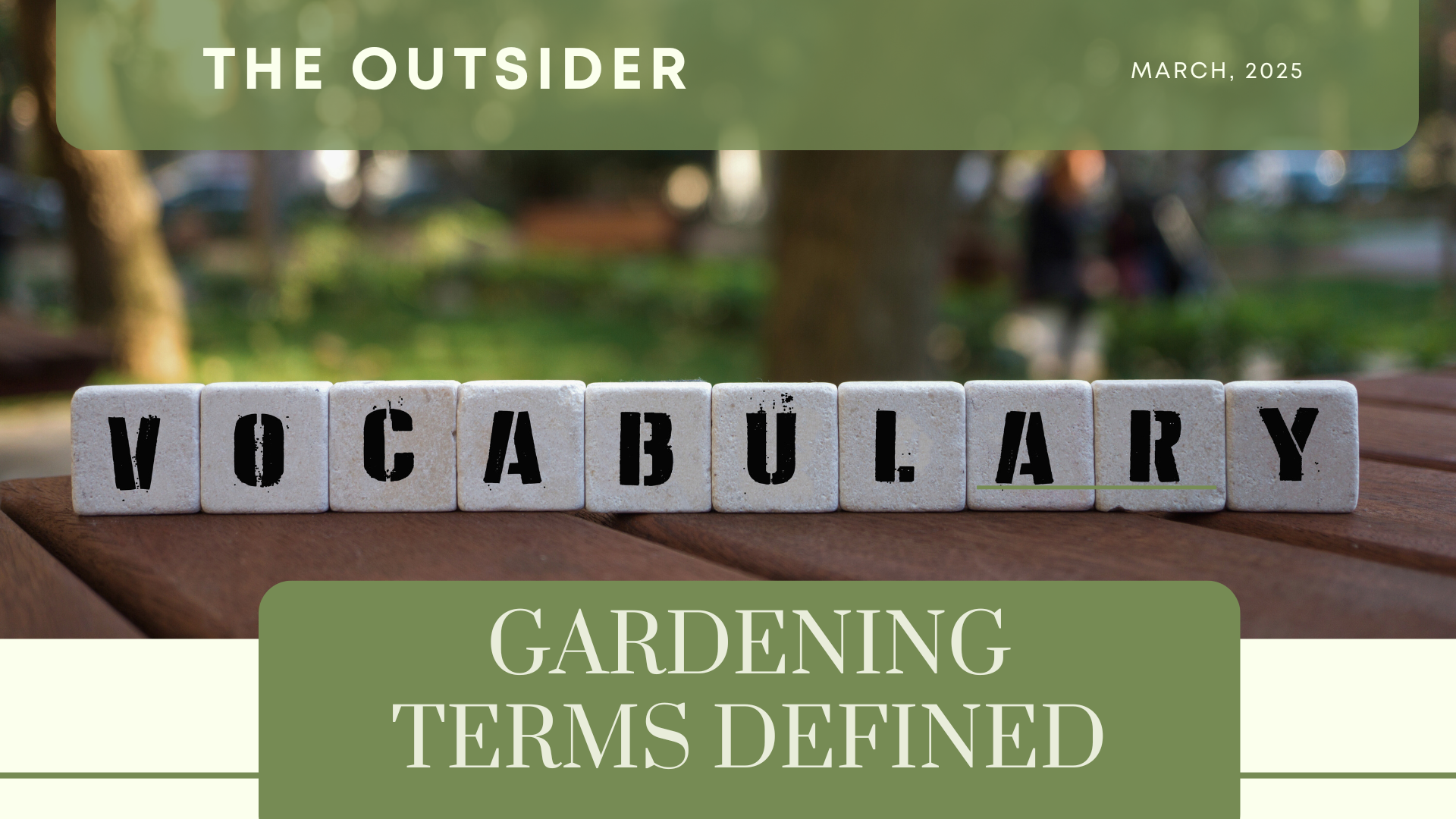Gardening Vocabulary
As many are discovering, gardening can be a rewarding pastime, but new gardeners may find the terminology confusing, misleading, or frustrating. Understanding these terms is crucial to making informed decisions when selecting plants for your garden. Here's a guide to help you decode key gardening terms and set yourself up for success.
Text-Friendly Version Download the issue
- Issue 40: Root Vegetables
- Issue 39: Managing Winter Landscape for Wildlife
- Issue 38: Urban Wood Utilization
- Issue 37: Planting Bulbs
- Issue 36: Soil and Soil Testing
- Issue 35: All About Tomatoes
- Issue 34: Pollinators & Our Food Systems
- Issue 33: Cool Season Crops
- Issue 32: Early Spring Blooms
- Issue 31: Cost Saving Benefits of Trees
- Issue 30: Peppermint: Flavor of the Holidays
- Issue 29 About Trees for Winter
- Issue 28 All About Pumpkins
- Issue 27 on Late Summer Gardening to Dos
- Issue 26 on Ornamental Grasses
- Issue 25 on Donating Produce
- Issue 24 on When Plants Fight Back
- Issue 23 on Sunflowers:
- Issue 22 on Raingardens:
- Issue 21: Windbreaks:
- Issue 20: Plant Propagation:
- Issue 19: Christmas Trees:
- Issue 18: Falling For Trees:
- Issue 17 Native Cultivars
- Issue 16: Fall Gardening
- Issue 15: Watering Your Garden and Lawn
- Issue 14: Container Gardening
- Issue 13: Tree Planting
- Tree Planting Basics
- Issue 12: Spring
- Issue 11: Native Plants
- Issue 10: All About Roses
- Issue 9: Tree Pruning: The Time is Now
- Issue 8: Birds: Small But Mighty
- Issue 7: Resolution: Time Outside
- Issue 6: Horticulture Holiday
- Issue 5: They Are Not All Pine Trees
- Issue 4: Outsider Gifts
- Issue 3: Spooky Halloween Plants October 2021
- Issue 2: Planting Trees October 2021
- Issue 1: Autumn Leaves September 2021:
Sign up to have The Outsider sent to your email: go.illinois.edu/TheOutsider
Never miss an issue of The Outsider. This monthly horticulture resource to educate and inspire highlights seasonal plants, gardening, planting, or growing tasks, and outside activities you can do. It is written by Emily Swihart, Illinois Extension horticulture educator serving Henry, Mercer, Rock Island and Stark Counties.
The Outsider is a monthly horticulture resource to educate and inspire! It will highlight seasonal plants, gardening, planting, or growing tasks and outside activities you can do. It is written by Emily Swihart, Illinois Extension horticulture educator serving Henry, Mercer, Rock Island and Stark Counties. Don't miss an issue - Sign up for The Outsider to be sent to your email @ go.illinois.edu/TheOutsider
